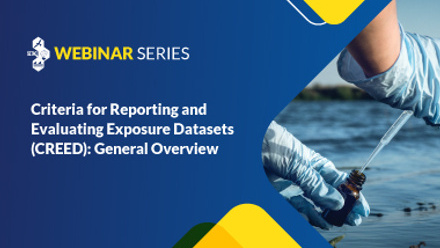Data Usability
Risk-based environmental chemical management relies on both exposure data (chemical concentrations in environmental media) as well as ecotoxicity data. Due to the complexity of exposure and ecotoxicity data, it is important to ensure that the data are “usable” – defined as both reliable and relevant for the intended purpose.
SETACers have been advancing data usability as related to chemical assessment for quite some time:
In 2015, SETAC hosted a Pellston Workshop® titled, “Improving the usability of ecotoxicology in regulatory decision-making.” The workshop output emphasized the need for developing evaluation criteria and approaches for reliability and relevance of ecotoxicity data.
In 2016, the Criteria for Reporting and evaluating Ecotoxicity Data (CRED) were first introduced with the goal of providing criteria and guidance for reliability and relevance evaluation of aquatic ecotoxicity studies.
In 2022, SETAC sponsored a global technical workshop to develop analogous criteria for evaluating the reliability and relevance of exposure (chemical monitoring) data, which resulted in the introduction of Criteria for Reporting and Environmental Exposure Data (CREED) in 2023.
The ultimate goal of the CRED and CREED schemes is to provide frameworks through which datasets are evaluated in a systematic, detailed, and transparent way, which ultimately should support informed decision-making and cost-effective monitoring and assessment. Under both CRED and CREED, the ecotoxicity study or dataset is assigned to one of four categories for each of reliability and relevance, based on the ratings of their respective criteria:
- Reliable or relevant without restrictions,
- Reliable or relevant with restrictions,
- Not reliable or relevant,
- Not assignable, typically because important information about the study is missing.
Criteria for Reporting and Evaluating Ecotoxicity Data (CRED)
The CRED evaluation method includes a set of 20 reliability and 13 relevance criteria and is accompanied by reporting recommendations for aquatic ecotoxicity studies, with 50 recommendations divided into six classes: general information, test design, test substance, test organism, exposure conditions, and statistical design and biological response.
CRED: Criteria for reporting and evaluation ecotoxicity data
ET&C 35: 1297–1309
Criteria for Reporting and Environmental Exposure Data (CREED)
The CREED method includes a set of 19 reliability and 11 relevance criteria and is accompanied by reporting recommendations for environmental monitoring datasets, with specific criteria divided into six classes: media, spatial, temporal, analytical, data handling and statistics, and supporting parameters.
An important feature of CREED is that any data limitations that prevent a dataset from fully meeting any criteria are recorded and become part of the CREED summary report for that dataset. The CREED summary report presents the dataset's scores (categories) for reliability and relevance, and any data limitations that may restrict the use of the dataset. These data limitations also serve as a data gap tool and may suggest possible strategies for locating missing information or otherwise overcoming the resulting data use restrictions.
Download the CREED template.
IEAM Special Series
Implementation of the CREED approach for environmental assessments



